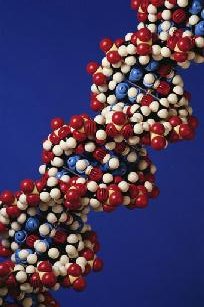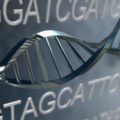
The movement of genes between unrelated species (horizontal gene transfer, or HGT) may happen much more frequently than previously believed, allowing species to acquire new genes and functions extremely quickly, say scientists from the University of Rochester and the J. Craig Venter Institute.
Their new study, appearing Science, is based on the discovery of a copy of the entire genome of a bacterial parasite residing inside the genome of its host species. If such gene transfers happen frequently between bacteria and multicellular organisms, it will have dramatic implications for evolutionary theory.
“It didn’t seem possible at first,” says Jack Werren, professor of biology at the University of Rochester. “This parasite [Wolbachia] has implanted itself inside the cells of 70 percent of the world’s invertebrates, coevolving with them. And now, we’ve found at least one species where the parasite’s entire – or nearly entire – genome has been absorbed and integrated into the host’s. The host’s genes actually hold the coding information for a completely separate species.”
Werren says Wolbachia may be the most prolific parasite in the world. The bacterium invades a member of a species, most often an insect, and eventually makes its way into the host’s eggs or sperm. Once there, the Wolbachia is ensured passage to the next generation of its host, and any genetic exchanges between it and the host are much more likely to be passed on.
Since Wolbachia typically live within the reproductive organs of their hosts, Werren reasoned that gene exchanges between the two would frequently pass on to subsequent generations. Based on this and an earlier discovery of a Wolbachia gene in a beetle, the researchers decided to systematically screen invertebrates.
They found evidence that some of the Wolbachia genes seemed to be fused to the genes of the fruitfly, Drosophila ananassae, as if they were part of the same genome. To look into the mystery, Rochester’s Michael Clark brought a colony of ananassae into the lab. To isolate the fly’s genome from the parasite’s, Clark fed the flies a simple antibiotic, killing the Wolbachia. To confirm the ananassae flies were indeed cured of the wolbachia, Clark tested a few samples of DNA for the presence of several Wolbachia genes. To his dismay, he found them.
“For several months, I thought I was just failing,” says Clark. “I kept administering antibiotics, but every single Wolbachia gene I tested for was still there. I started thinking maybe the strain had grown antibiotic resistance. After months of this I finally went back and looked at the tissue again, and there was no Wolbachia there at all.” Clark had cured the fly of the parasite, but a copy of the parasite’s genome was still present in the fly’s genome.
Astonishingly, the Wolbachia genes are inherited like “normal” insect genes in the chromosomes. But Werren doesn’t believe that the Wolbachia “intentionally” insert their genes into the hosts. Rather, it is a consequence of cells routinely repairing their damaged DNA. As cells go about their regular business, they can “accidentally” absorb bits of DNA into their nuclei, often sewing those foreign genes into their own DNA. But integrating an entire genome was definitely an unexpected find.
Werren and Clark are now looking further into the huge insert found in the fruitfly, and whether it is providing a benefit. “The chance that a chunk of DNA of this magnitude is totally neutral, I think, is pretty small, so the implication is that it has imparted of some selective advantage to the host,” says Werren. “The question is, are these foreign genes providing new functions for the host” This is something we need to figure out.”
The new discovery may prompt scientists conducting genome-sequencing projects to readjust their thinking. Previously, geneticists knew of examples where genes from a parasite had crossed into the host, but such an event was considered a rare anomaly except in very simple organisms. Bacterial DNA is very conspicuous in its structure, so if scientists sequencing a nematode genome, for example, come across bacterial DNA, they would likely discard it, reasonably assuming that it was merely contamination.
But those genes may not be contamination. They may very well be in the host’s owngenome. This is exactly what happened with the original sequencing of the genome of the anannassae fruitfly – the huge Wolbachia insert was discarded from the final assembly, despite the fact that it is part of the fly’s genome.
Werren noted that such transfers have happened before in the distant past. “In our very own cells and those of nearly all plants and animals are mitochondria, special structures responsible for generating most of our cells’ supply of chemical energy. These were once bacteria that lived inside cells, much like Wolbachia does today. Mitochondria still retain their own, albeit tiny, DNA, and most of the genes moved into the nucleus in the very distant past. Like Wolbachia, they have passively exchanged DNA with their host cells. It’s possible Wolbachia may follow in the path of mitochondria, eventually becoming a necessary and useful part of a cell. In a way, Wolbachia could be the next mitochondria,” he concluded.
Related articles:
Is Evolutionary Development Like Flat-Pack Furniture?
Biochemical “Noise” Critical For Regulating Biological Processes
Horizontal Gene Transfer Accelerating Evolution
Promiscuous Proteins Provide Evolutionary Shortcuts








Comments are closed.